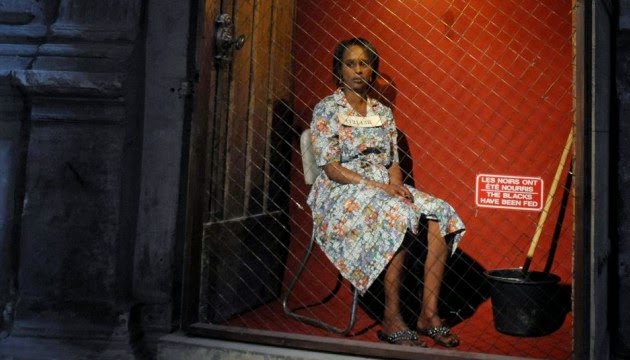 |
| Looking right through the eyes of the subjugated |
This live art installation represents a colonial human zoo in what attempts, according to Bailey, to 'explode racial and cultural stereotypes rather than reinforce them'; by placing motionless performers in different positions, the piece aims at confronting and denounce colonialism as well as white European supremacy.
Not so, say many people who protested and signed a petition and who managed to shut down the display at the Barbican in London last September. For its critics, this show is a way of reinforcing prejudices and denigrating Black people.
Similar scenes of protest have been seen in France this month.
 |
| Colonial human zoos, but is it art? |
I personally find it difficult to back any demand for a show to be censored, unless there is an element suggesting racial, ethnic, religious or gender hatred incitement. As this is clearly not case, I can only lament the fact that due to these protests many people will not be able to make their minds up.
The verdict, then, is pretty clear in this occasion; may Exhibit B offend and disgust some people? Certainly; Can it be labelled as provocative and thought-provoking? Indeed; Are there any grounds for it to be banned? Absolutely not.
